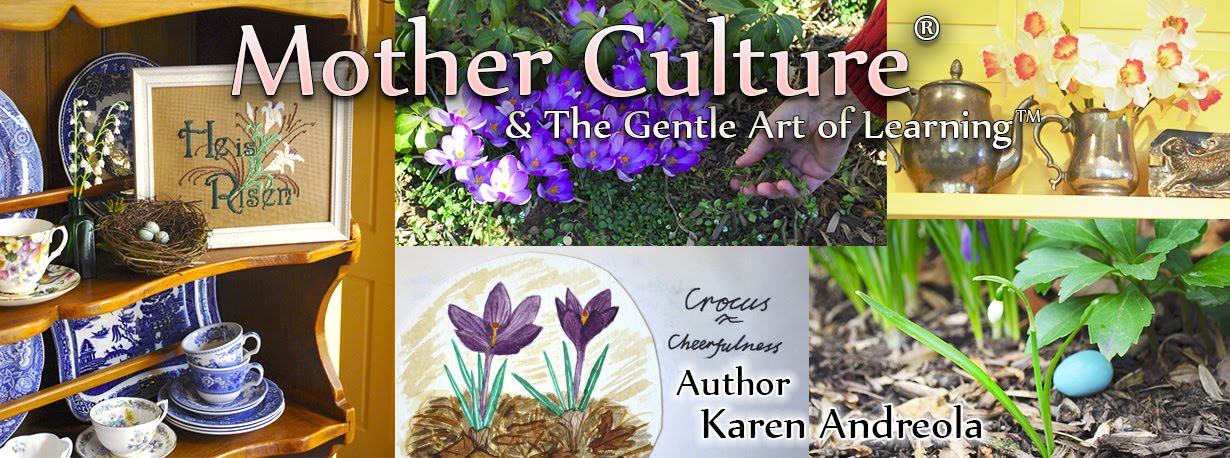A Sampler of Hope
In the bustle of a busy week the telephone rang. It was a
reminder that someone loved by the Lady-of-the-House was scheduled for “further
tests” the next day. Medical exams can be unnerving. By accompanying the
patient she would lend support. She would also have a portion of time with
nothing to do. She made preparations for it. She supplied her denim bag. A row
of strawberries was all that was left to stitch on her “carnation” sampler.
Slow and steady is how she stitches. There really is no other way to do it.
Little stitches can’t be rushed. Recently, however, time reserved for stitching
had vanished into thin air.
With the linen rolled in a towel, her thread tucked into the
pockets of the sewing case, with her smallest pair of scissors, oh yes, and the
plastic magnifying lens she wears around her neck to see the stitches, she was set.
During the test she waited in the car. It was a beautiful
cool spring morning. She clung to hopeful thoughts for the patient although the
results of the test would come later. Her natural temperament veers toward
melancholy. She must be mindful of seeing roses beyond thorns, honey beyond bee
stings.
Of St Paul’s three; faith, hope and love, love is emboldened
by feeling. Faith relies on the intellect. Hope involves the will. Hope
optimistically reaches out a hand in the dark to turn on the light. It sees the
good and the beautiful in the light of the Kingdom of God.
Hope is like the sun, which as we journey toward it, casts the shadow of our burden behind us. Samuel Smiles
Through car windows the Lady-of-the-House glanced around the
plaza. Everything was emerald green. Neatly trimmed bushes and flowering trees
bordered the parking lot and walkways. Someone evidently had hired the right
landscaper. A fountain was attracting twittering birds but the sound of tweets
and splashing water was faint. Here’s why. A young man was mowing and edging
the grass. At one end of the parking lot food service trucks backed up to an
historic stone house, converted into a fine restaurant. Around the corner of
the medical building, out of her line of vision, was the main air conditioning
unit roaring low but unendingly. The Lady-of-the-House sighed. “Sometimes this
is almost a perfect world,” she thought
and twisted to the backseat for her denim bag.
She unrolled the linen, threaded the needle and made the
first pink stitch. It was some minutes before her shoulders begin to soften.
She prayed for the patient and remembered to make a calming prayer of
appreciation for peace in the midst a nervous, distracting world. Her shoulders
softened some more. “I never get tired of stitching strawberries,” she mused
soothingly. Vines, however, are another matter. Without accurate counting the
picking out of wayward stitches follows.
On the way home the Man-of-the-House and the
Lady-of-the-House stopped at some of the many roadside stands in their
neighborhood and filled two baskets.
Stitching strawberries and eating strawberries made the
Lady-of-the-House wonder how many strawberries are on the walls of her house.
She has never counted all the strawberries on all her samplers but the number
must be high.
And for years there has hung a plump beaded velvet strawberry,
with satin flower, on the drawer of her desk – made by a friend. Lovely.
On Saturday the Lady-of-the-House roasted asparagus in the
oven.
She made her usual avocado sandwich on homemade bread but added
strawberries as a lark. Different, but delicious.
Then she sat on the patio to
stitch her last strawberry. The relaxing moment was worth waiting for.
 |
| The Man-of-the-House |
The Man-of-the-House was sitting across from her. He likes
to unwind with an mp3 plugged into his ears. He was listening to old radio
recordings of the comedians Bob & Ray.
“It’s done,” his wife announced.
“Very nice,” he smiled. She read him the verse. “Very nice,” he said again. He was concise but sincere.
While bouncing back and forth in indecision on how to personalize her sampler,
she added birds and rabbits from other charts, and eventually settled upon
a verse by Emily Dickinson. It is a ponderous reminder.
She squeezed in the
last two words in a manner done on many a girlhood sampler in days of old.
The verse replaces Mary Rule’s name and other identifying
notes she originally stitched in 1848. But the piece will be remembered as a
sort of partnership, past and present, of feminine work and whimsy by the
Lady-of-the-House.
During the week a friendly letter came her way. The young
mother had an optimist’s cheerful tone of gratitude in her pen. She spoke of
the joy of home teaching and seeing the world through the eyes of her little
children – no doubt with newness, a sense of wonder, and with purity. The
Lady-of-the-House affirmed this joy in her reply and added, “They’re seeing the
world through your eyes, too.”
Post Script
 |
| Awaiting framing |
For “hope” in education see “Parents as Inspirers” posted
October 2, 2010.
The chart is by “Lady in Thread.”
Roasted Asparagus
For my friends who asked how to roast asparagus when I told them what I'd been up to. With a vegetable peeler remove skin from midway along
spears. Place in a roasting pan. With the peeler handy, shave two or three
carrots into a pile of strips. Cut a sweet onion into wedges. Add carrot and
onion to asparagus. Drizzle a tablespoon of olive oil over vegetables to
lightly coat. Sprinkle with salt. Bake at 350 for 20-25 minutes or until fork
tender.
Remove from oven and season with fresh herbs of choice. Serve as a side
dish (as shown) or chopped and tossed with pasta and grated Romano cheese. Try
fennel bulb sliced thinly in place of onion.
Thank you for visiting,
Karen Andreola



























